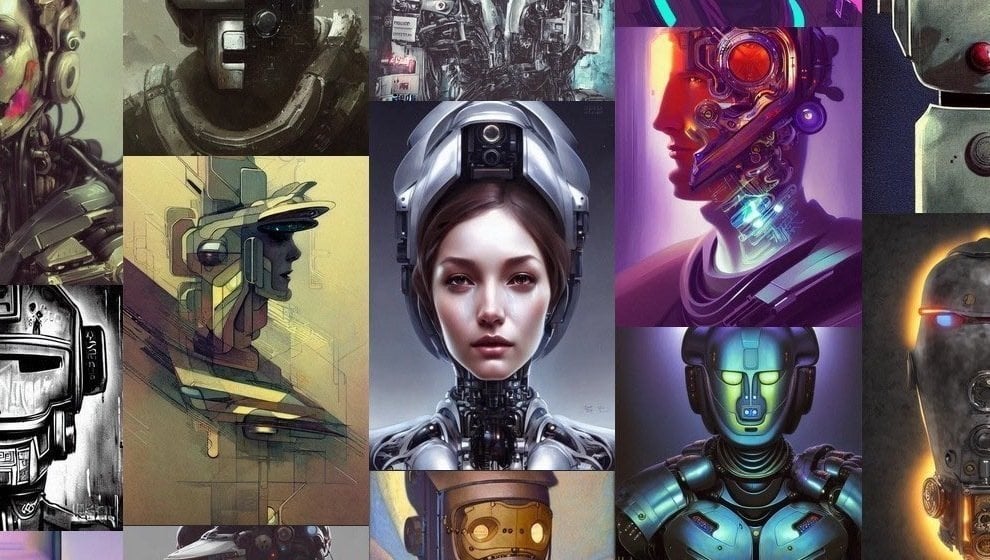AI Doesn't Really Learn: Understanding The Implications For Responsible Use

Table of Contents
AI: Statistical Prediction, Not True Learning
The term "AI learning" often evokes images of a machine acquiring knowledge and understanding like a human. However, this is a significant misconception. While AI systems can perform impressive feats, their processes are fundamentally different from human learning. Instead of genuine understanding, AI relies on sophisticated statistical prediction and pattern recognition.
-
AI relies on vast datasets and algorithms to identify patterns and make predictions. AI systems are trained on massive datasets, allowing them to identify correlations and make predictions based on probability. This is machine learning at its core: algorithms analyzing data to find patterns, making predictions, and refining their accuracy over time through processes like deep learning. However, this process lacks the conscious awareness and understanding inherent in human learning.
-
AI lacks the capacity for critical thinking, generalization beyond training data, and contextual understanding. An AI trained to identify cats in images might excel at that task but fail to recognize a cat in a different pose or lighting condition. It cannot generalize its knowledge beyond the specific parameters of its training data. Furthermore, it lacks the contextual understanding a human possesses; it doesn't "understand" what a cat is – only that certain pixels and shapes correspond to the label "cat."
-
AI's "learning" is limited to optimizing performance on specific tasks defined by its programming. AI models are designed for specific purposes. A self-driving car's AI is trained for navigation and obstacle avoidance, not for philosophical debate or creative writing. Its "learning" is confined to improving its performance within those pre-defined boundaries.
For example, an image recognition AI can identify a cat with remarkable accuracy. However, this identification is based solely on identifying patterns in pixels; the AI doesn't possess any genuine understanding of felines, their biology, or their place in the ecosystem. This distinction highlights the fundamental difference between statistical pattern recognition and true learning.
The Implications of Misunderstanding AI "Learning"
Anthropomorphizing AI—attributing human-like qualities to it—leads to a dangerous overestimation of its capabilities. This misunderstanding carries significant implications:
-
Over-reliance on AI decisions without human oversight can lead to biases and errors with significant consequences. AI systems inherit the biases present in the data they are trained on. This can result in unfair or discriminatory outcomes, particularly in areas like loan applications, criminal justice, and hiring. Without human oversight, these biases can perpetuate and amplify existing inequalities.
-
The perception of AI as a self-learning entity can hinder critical evaluation and responsible development. If we believe AI is inherently objective and unbiased, we are less likely to scrutinize its outputs or address potential flaws in its design and training. This lack of critical evaluation can have serious repercussions.
-
This misunderstanding can fuel unrealistic expectations and potentially lead to disappointment or misuse. Overhyping AI's capabilities can lead to disappointment when the technology fails to meet inflated expectations. This can also lead to misuse, as people may overestimate its reliability or ability to handle complex situations without human intervention.
The ethical implications are far-reaching: bias in algorithms contributes to societal inequalities; job displacement necessitates reskilling and adaptation; privacy concerns arise from data collection; and the potential for misuse in surveillance or autonomous weapons systems presents grave dangers.
Responsible AI Development and Deployment
Addressing the ethical challenges requires a paradigm shift towards responsible AI development and deployment. This necessitates a focus on transparency, accountability, and human oversight.
-
Explainable AI (XAI) techniques aim to make AI decision-making more transparent. XAI methods strive to make the reasoning behind AI decisions more understandable, helping to identify and mitigate biases and errors.
-
Robust testing and validation are crucial to mitigate biases and errors. Rigorous testing and validation processes are necessary to ensure that AI systems are reliable, fair, and perform as intended.
-
Ethical guidelines and regulations are essential for AI development and deployment. Clear guidelines and regulations can help to ensure that AI systems are developed and used responsibly, minimizing risks and maximizing benefits.
-
A human-centered approach prioritizes human well-being and values. AI should be designed to serve humanity, not replace it. A human-centered approach ensures that AI systems are aligned with human values and priorities.
Furthermore, ongoing education and public awareness are critical. We must foster a better understanding of AI's true capabilities and limitations to promote informed discussions and responsible technological advancements.
The Future of Responsible AI: Moving Beyond the Illusion of Learning
In conclusion, AI does not "learn" in the human sense. This misunderstanding has significant implications, leading to over-reliance, ethical concerns, and the potential for misuse. Responsible development, emphasizing transparency, accountability, and human oversight, is crucial to mitigate these risks. Explainable AI, robust testing, ethical guidelines, and a human-centered approach are all vital components of a responsible AI future.
Understanding that AI doesn't truly learn is the first step towards responsible development and deployment. Let's move beyond the illusion of learning and build an AI future that prioritizes human well-being and ethical considerations. Engage in critical discussions about AI, advocate for responsible AI practices, and demand transparency from developers and policymakers regarding AI systems. The future of AI depends on our collective commitment to responsible innovation.

Featured Posts
-
 Trumps Fatal Doubt About Elon The Untold Story Of Their Falling Out
May 31, 2025
Trumps Fatal Doubt About Elon The Untold Story Of Their Falling Out
May 31, 2025 -
 Foire Au Jambon 2025 Explosion Des Frais D Organisation Et Deficit La Ville De Bayonne Seule Responsable
May 31, 2025
Foire Au Jambon 2025 Explosion Des Frais D Organisation Et Deficit La Ville De Bayonne Seule Responsable
May 31, 2025 -
 Netflixs Black Mirror 5 Real Life Examples Of Its Dystopian Visions
May 31, 2025
Netflixs Black Mirror 5 Real Life Examples Of Its Dystopian Visions
May 31, 2025 -
 Doutes Sur La Foire Au Jambon 2025 A Bayonne Deficit Et Frais D Organisation En Question
May 31, 2025
Doutes Sur La Foire Au Jambon 2025 A Bayonne Deficit Et Frais D Organisation En Question
May 31, 2025 -
 Saskatchewan Wildfire Season Hotter Summer Fuels Concerns
May 31, 2025
Saskatchewan Wildfire Season Hotter Summer Fuels Concerns
May 31, 2025
